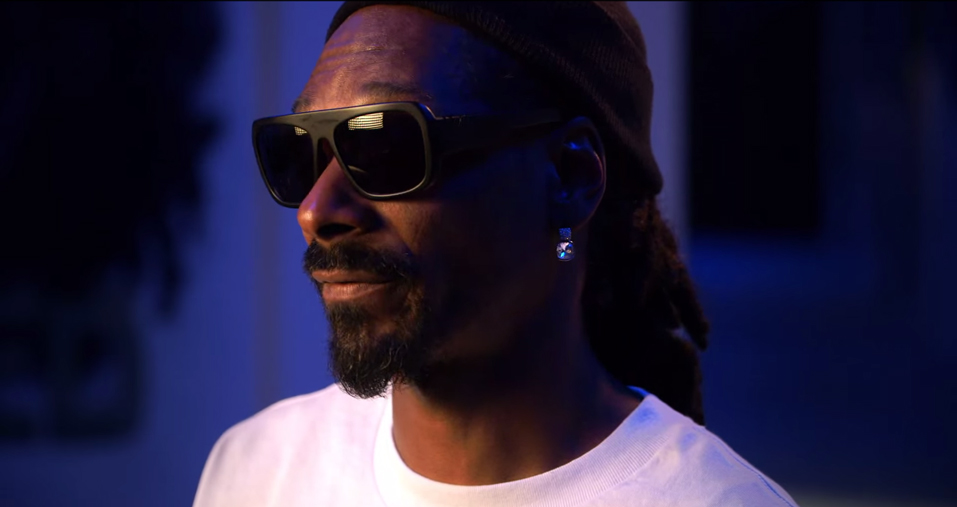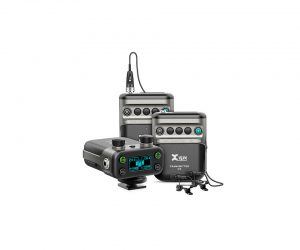
VIDEO: THE DISTORTION OF SOUND

A new documentary short as emerged from director Jeremy Rosenberg which explores the damage that today’s digital compression techniques do to the sound of artists music.
The film which was recently uploaded to Youtube, contains interviews with music heavyweights, such as Mike Shinoda (Linkin Park), Snoop Dogg, Slash, Hans Zimmer and Quincy Jones (amongst others) who complain that the music they take time to create and produce is largely consumed through highly compressed mp3 formats and low-cost earphones/laptop speakers, thus removing the dynamic frequencies, fidelity and the emotion of its sound.
“Compression removes up to 90% of the original song” said Chris Ludwig, Chief Engineer Acoustic Systems at Harman. Greg Timbers, Speaker Engineer at JBL, goes further in describing listening to music through a compressed format is “like looking at a Van Gogh through filtered glasses”.

The filmmaker’s recall the days of vinyl analogue recordings, when music was often consumed through the home turntable hi-fi systems, discussing each new generation of music consumption until the turn of millennium’s digital compression mp3 format.
Although it should be stated (which it isn’t) that in those times, the greatest consumers of modern music (the ages of 14 – 25) would have commonly accessed their music through ghettoblasters, portable turntables, tape recorders or AM radio, all of which have never offered high fidelity or true sound.
Many a baby boomer or Gen X-er will remember sitting on their beds listening to their old am radio, with tape recorder alongside (record & pause buttons on standby) trying to ‘catch’ a recording of their song when it was played (one of the earliest forms of pirating) or sharing tapes of the latest band’s album (recorded in the same way).
It begs the question, that for young consumers, has the quality changed so greatly?

The film goes to great length to point out that, today streaming services like Youtube, Spotify and Pandora have increased the consumption of music but at the cost of its quality. Arguing that most of today’s music consumers aren’t aware of how much of the songs they consumer are missing within the sound.
“We have a McDonald’s generation of music consumers” said Hans Zimmer.
The film is heavy-handed in its approach stating that “to date over 25 billion songs had been downloaded and 50 billion hours of music has been streamed”, with the final point being that “compression had stripped emotion from every note.” resulting in a plea that things can change.
Where the film lacks, is that it poses a problem without providing an answer for those who do want to consume their music at a higher resolution.

There is no mention of Neil Young’s Kickstarter campaign to crowd-fund Pono (a high definition music player, with songs that have the similar quality as original master recordings) or Sony’s work with Universal Music Group and Warner to create HRA (high resolution audio, starting at 48Khz/24 bit and up) content.
Or the already growing base of HRA download sites, such as Audiostream, iTrax and HDTrax.
There is also a comparison of uncompressed audio to highly compressed, so the audience can see the difference. Although it should be stated, that the film’s audio itself is compressed via Youtube to a lesser quality.
Whether this film will do anything to change the minds of consumer, or create a desire for HRA music is doubtful. It would require a massive change in the industry to adopt the higher standard, with few mobile phones being able to play the HRA files currently, in addition to the associated high costs and bandwidth required.
What the film does do well, is highlight the issue. We can only hope that the average consumers will care about it as much as audiophiles do.
Watch the film below and let us know your thoughts.
















Convenience wins over quality all the time. Happened a long time before the mp3. Video tapes over broadcast quality. Fast junk food over quality food. Music has proliferated into a disposable commodity. But the artists, engineers and producers care about what they are doing. Can they steer the ship back on course?
I got the feeling there was some confusion between lossy codec compression and compression using gain-reduction in the video. Both have happened, but they are different beasts.
For a start, and I haven’t yet watched the video, I like the idea that Chester Bennington talks about sound quality while monitoring – and tracking – through a woolly hat!
While this is a very important topic and a beautifully shot and edited production, it’s kind of ironic that it confuses audio compression and data compression in sections.
The examples given are so dramatic – it’s like those infomercials that use ridiculous before and after examples for losing weight or cleaning your kitchen bench top. It’s a pity!
It’s really good to see something like this because it’s about time we brought the ‘quality’ of music back to the consumer. What’s disappointing with this video is that it’s only exposing the problems but doesn’t mention any solutions. I guess informing people is the first step, making them aware that we need to change something and hopefully there is some genius people out there that can come up with a new format.
I think Apple are on the right path with offering MFiT (iTunes +) content which is a very high quality AAC codec which preserves in my testing more information than 16bit 44.1kHz PCM when converted from a 24bit 44.1kHz (or higher sample rate) PCM source.
The problem I see for this format is that it’s not accessible to every artist at the moment. Only the signed artists with record labels that have access to iTunes reps that can supply MFiT content to iTunes. This needs to change and be available to all artists through digital distribution aggregators like Tunecore and CD Baby etc.
Unfortunately it’s not just a case of getting the consumer formats to a better quality either. That’s only one part of the problem as the video points out.. it’s also the quality of the playback devices that is just as much the problem. i.e. ear buds, headphones, speakers, electronic playback devices. All of these things need to be improved before the world will hear great quality music. That comes down to education and people willing to spend more money to use better quality equipment and it also has to be light, portable and convenient.
Matthew Gray – Matthew Gray Mastering Brisbane http://www.matthewgraymastering.com
Funny thing is, the audio playback equipment used to be good 40 years ago. Many of those brands are now gone or diluted with cheap junk. The consumer has changed significantly too. Instead of sitting down and listening to a recording in a room with speakers, amp, turntable and preamp, audio is consumed in the background whilst doing other things. Given this change in listening environment, perhaps the consumer is too distracted to hear the nuances and emotion that the artist and engineers have worked so hard to achieve? I am not convinced that the delivery format will make a real impact on listening habits.
If lose 90% of the constipated whinings of Linkin Park – can’t be a bad thing?
OK- I’ve watched the video now and… I almost can’t be bothered. These stupid arguments will go on for ever. And how can you possibly argue with the hyperbole of “the emotion has been stripped from every note” and repeated references to the “worst possible” in relation to delivery and reproduction. Not to mention the fatuousness of a comment like “it removes 90% of the song”. It makes sensible debate impossible.
I don’t listen to many mp3s, as I do appreciate the difference, but when I do – on my iPod, through my headphones – I still hear nuance, I still feel emotion. I appreciate that artists want their work to be heard “as they hear it” but when has that ever been possible? Have any of those artists heard of the RIAA curve?
I was particularly amused by the nostalgic references to older technology which, almost without exception, were lo-fi.
Artists and engineers should, and will, always strive for the best (the idiotic comment – voiced here by Slash – about “why bother?” is pathetic) but all the angst about how it is consumed is so much wasted energy.
Those who care will seek out the best. Those who don’t, won’t. It was ever thus.
Ditto to all comments before me. MP3/AAC is just a scapegoat and rarely the weakest point in the chain. Usually last in the list of crappy recordings, mixes, masters, playback systems and listening environments. As for the emotion, it transcends audiophilia. What a load of poppycock.